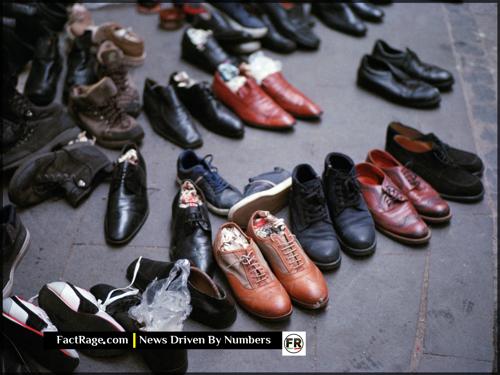NATIONWIDE – The Transportation Security Administration (TSA) continues to mandate that most passengers remove their shoes during security screening at all U.S. airports, a policy rooted in a specific security threat from over two decades ago.
- The Standard Rule – All passengers aged 13 to 74 who are not enrolled in a trusted traveler program must remove their shoes and place them in a bin for X-ray screening.
- Historical Origin – The policy was implemented after Richard Reid, the “shoe bomber,” attempted to detonate explosives hidden in his footwear on a flight in December 2001.
- Key Exceptions – Travelers enrolled in TSA PreCheck, as well as passengers 12 and under and those 75 and older, are generally permitted to keep their shoes on.
The familiar sight of passengers untying laces and slipping off shoes is a standard part of the airport experience. Understanding the official rules and the history behind this requirement clarifies its role in modern aviation security.
From Threat to Procedure: Deconstructing the Shoe Rule
![]() The requirement for air travelers to remove their shoes is one of the most visible security protocols in U.S. airports. It is not an arbitrary rule, but a direct response to a specific, documented security threat from 2001. Understanding the policy’s origin, the current regulations, and the available exceptions provides essential clarity for any traveler.
The requirement for air travelers to remove their shoes is one of the most visible security protocols in U.S. airports. It is not an arbitrary rule, but a direct response to a specific, documented security threat from 2001. Understanding the policy’s origin, the current regulations, and the available exceptions provides essential clarity for any traveler.
Read On…
The following report outlines the specific event that created the rule and the current guidelines for all passengers.
What is the Current TSA Shoe Policy?

Under current TSA regulations, all travelers passing through standard security lanes are required to remove their shoes for screening. This applies to all footwear, including sandals, boots, and athletic shoes. The shoes must be placed directly into a bin to pass through the X-ray scanner separately from carry-on luggage.
There are specific age-based exceptions to this rule. Children aged 12 and under and adults aged 75 and older are permitted to leave their shoes on during the screening process. However, if their footwear triggers an alarm, they may be required to undergo additional screening.
Why Was This Rule Implemented?
The mandate for shoe removal is a direct result of the attempted bombing of American Airlines Flight 63 from Paris to Miami on December 22, 2001. On that flight, passenger Richard Reid attempted to ignite explosives concealed within the soles of his shoes. Passengers and crew subdued Reid, and the flight was diverted to Boston.
In response to this specific threat, the TSA instituted the shoe removal policy in 2002 as a permanent security measure. The agency determined that X-ray screening of footwear was necessary to detect potential threats that could be hidden inside. The policy has remained in place as a baseline security protocol ever since.
How Can Travelers Keep Their Shoes On?
The most common way for frequent travelers to avoid removing their shoes is by enrolling in TSA PreCheck. This trusted traveler program allows members to pass through expedited security lanes without removing shoes, belts, or light jackets. Laptops and 3-1-1 compliant liquids can also remain in carry-on bags.
According to the TSA, there are currently more than 19 million active members in the PreCheck program. The application process involves an online form, a non-refundable fee of $78, and a brief in-person appointment that includes a background check and fingerprinting. Membership is valid for five years. Global Entry, a program expediting customs for international travelers, also includes TSA PreCheck benefits.
An Enduring Security Protocol
![]() The shoe removal requirement stands as one of the most direct and lasting procedural legacies of the post-9/11 security era. Originating from a single, specific threat in 2001, the policy has become a routine element of air travel for the majority of passengers in the United States. While trusted traveler programs provide an expedited alternative for millions, the standard screening process remains fundamentally shaped by this specific historical event.
The shoe removal requirement stands as one of the most direct and lasting procedural legacies of the post-9/11 security era. Originating from a single, specific threat in 2001, the policy has become a routine element of air travel for the majority of passengers in the United States. While trusted traveler programs provide an expedited alternative for millions, the standard screening process remains fundamentally shaped by this specific historical event.












